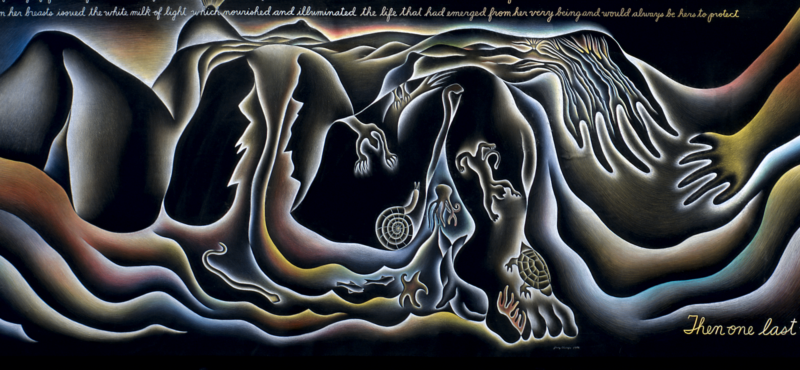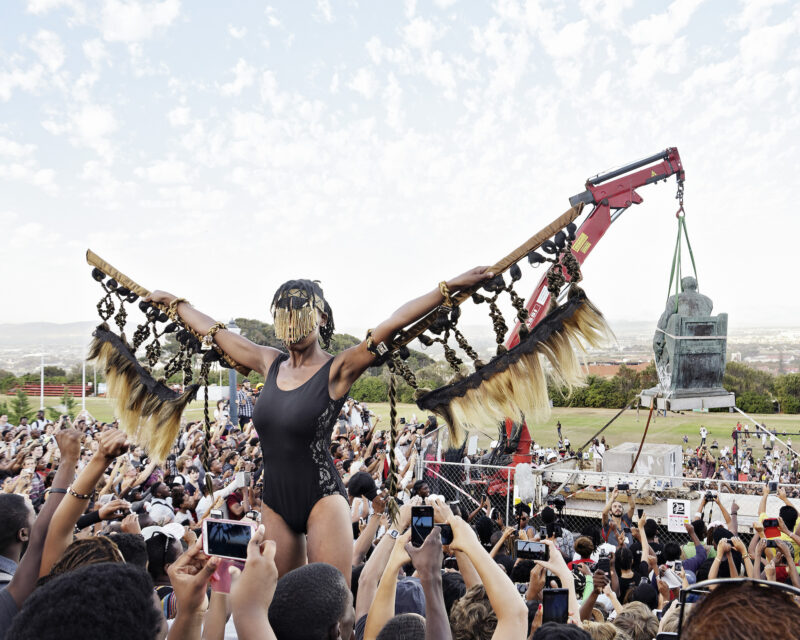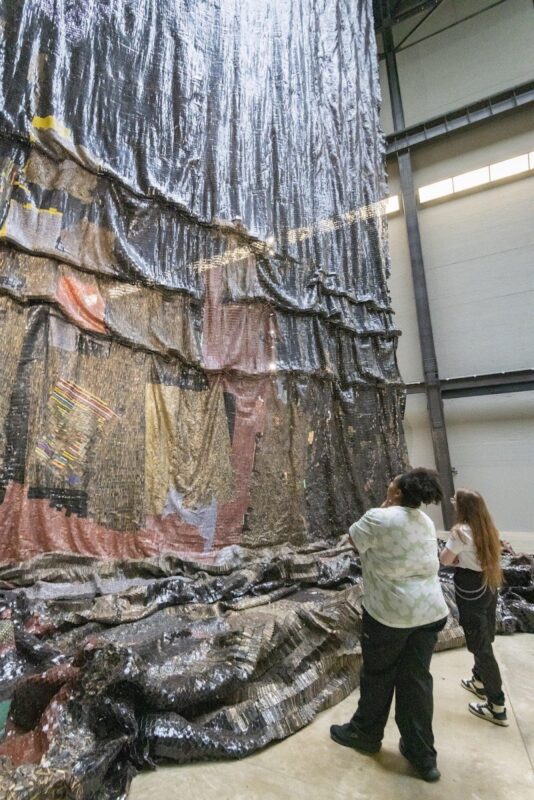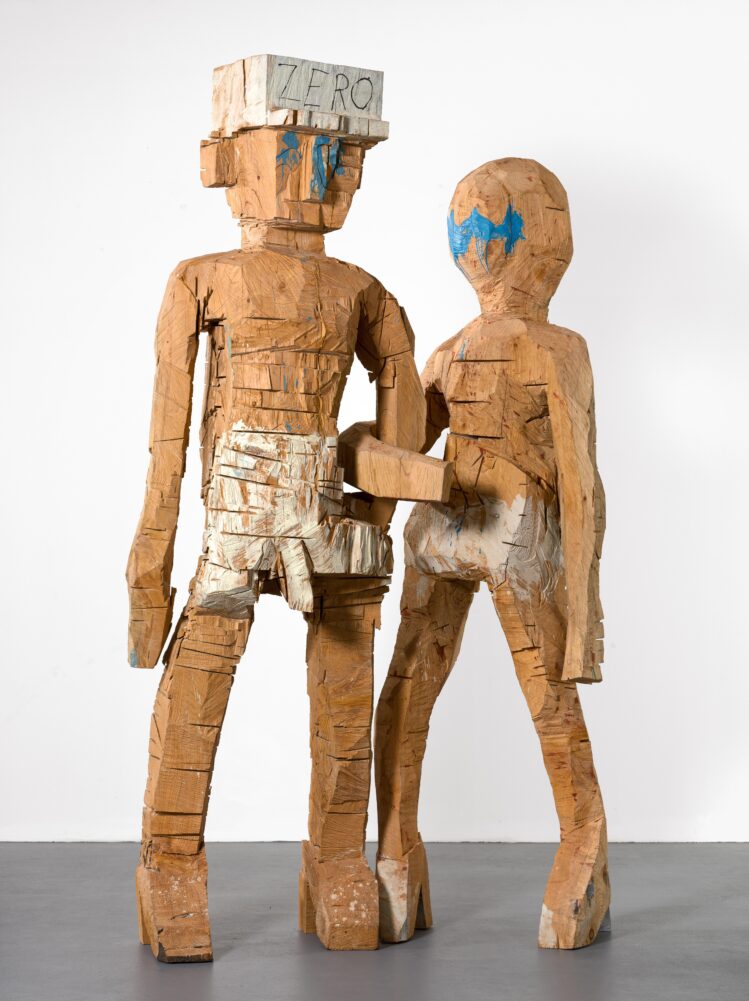
Serpentine to present its first solo exhibition of Georg Baselitz (born 1938 in Deutschbaselitz, Saxony) from 5th October 2023 to 7th January 2024. It will include a series of sculptures and drawings as well as a monumental nine-metre-tall sculpture Zero Dom (Zero Dome) within the Royal Parks, presented for the first time in the UK.
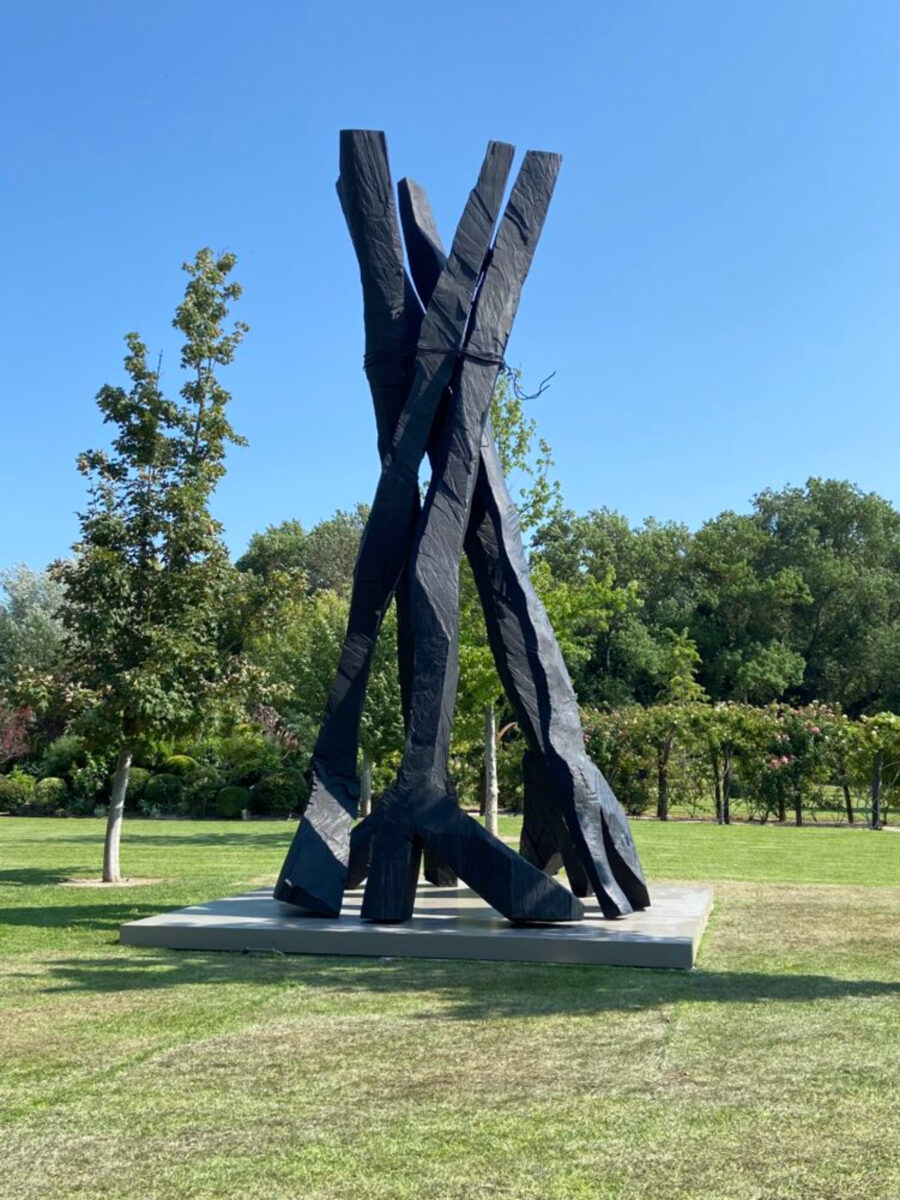
These pieces offer an intimate glimpse into the artist’s studio practice and explore the frailty of the body in relation to the highly physical and raw processes he employs to make the works.
The exhibition follows a long history of presenting sculpture inside its galleries and in the park including major shows of Henry Moore (1978), Anthony Caro (1984), Louise Bourgeois (1985, her first in a UK institution), Alberto Giacometti and more recently Nairy Baghramian and Phyllida Barlow.
With a career spanning over six decades, Georg Baselitz emerged in post-war Germany as one of the most influential contemporary artists of his generation. Since 1969, he has inverted the human figure and other motifs in his expressive paintings to sever his works from content and narrative. Instead, Baselitz focuses on form, colour and texture, bringing new perspectives to the tradition of figurative painting. Baselitz turned to sculpture in the 1980s, continuing to explore the tensions between the figurative and the abstract through his crude approximations of figures and body parts carved from wood.

Georg Baselitz: Sculptures 2011-2015 will feature 10 wooden sculptures which have never been exhibited before. These works will be presented alongside 68 related drawings rendered in pencil, pen and ink.

Sculpture is a thing like a miracle. It is built up, decked out, made arbitrary not as the sign of thoughts but as a thing within the limits of the shape. Even if a sculpture is hung from the ceiling, it remains a thing.
My carvings are best described by Immanuel Kant: ‘Out of the crooked wood of humanity, nothing entirely straight can be built. It is only the approximation of this idea that nature imposes upon us.
Georg Baselitz
The exhibition will offer a unique opportunity to gain insights into Baselitz’s sculptural process, highlighting the latest developments of the artist’s practice during this period.
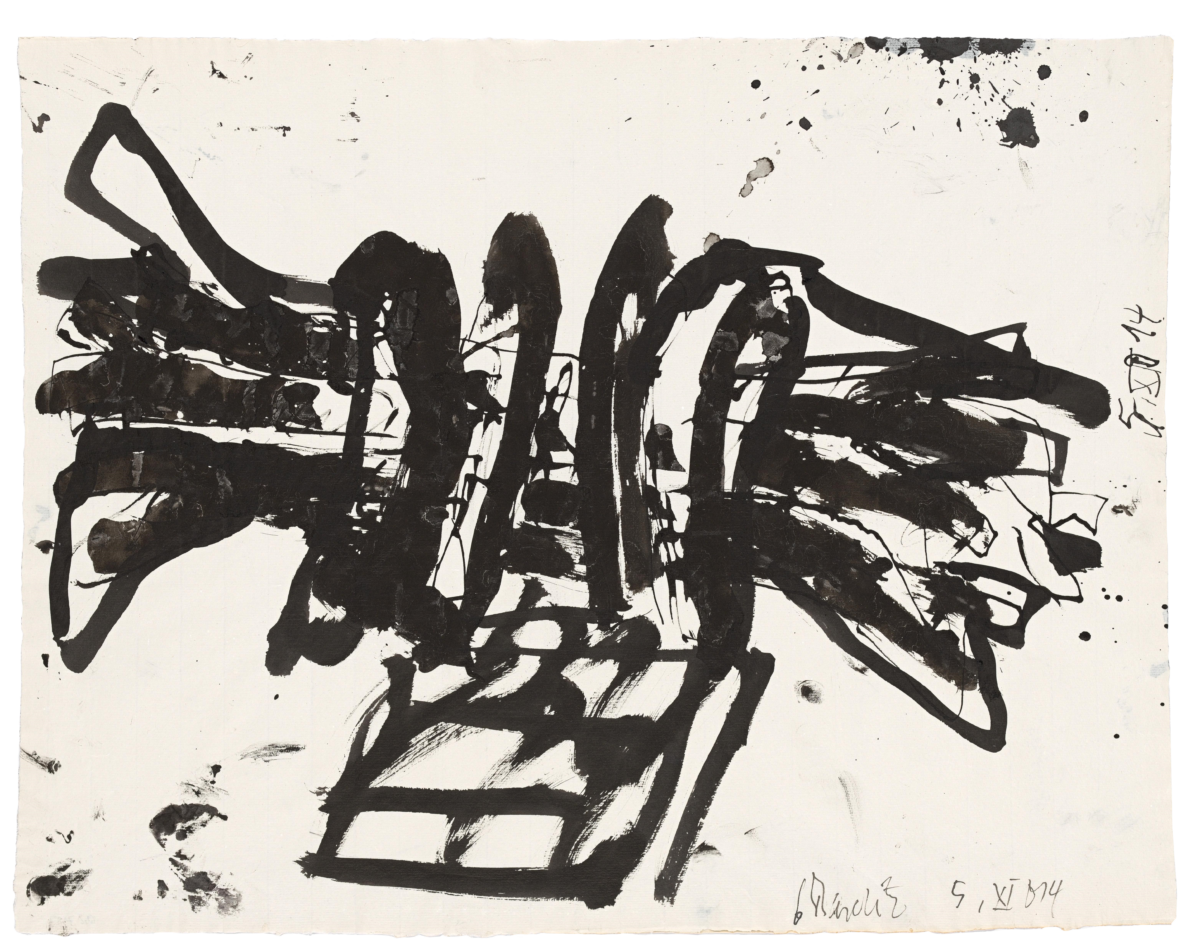
Baselitz turned to sculpture in the 1980s, continuing to explore the tensions between the figurative and the abstract through his crude approximations of figures and body parts carved from wood. These wooden sculptures were not originally intended for public exhibition, as they were made as maquettes for bronze works.
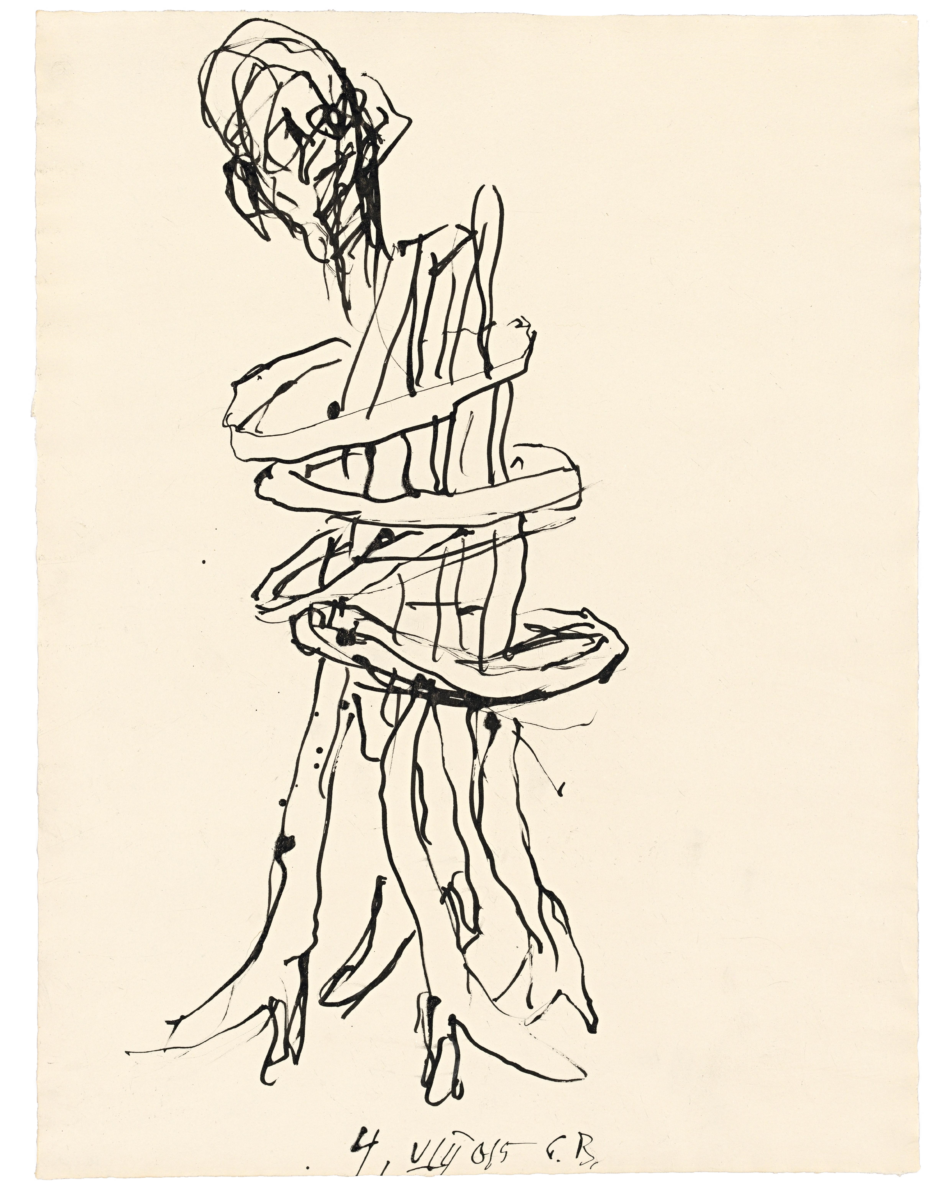
Each one is carved from a single tree trunk, reduced by using power saws, axes and chisels. This method gives form to solid, impactful figures while maintaining the materiality of timber with distinctive incisions and notches on its surface. The accompanying drawings were made not as preparatory sketches for the maquettes, but during the sculpting phase.
Together, the drawings and maquettes highlight the synthesis of Baselitz’s two- and three-dimensional ways of making and explore the possibilities and impossibilities of translating from painting to sculpture, and from sculpture to drawings.
Serpentine is honoured to stage this incredible body of wooden works and related drawings, which have never been presented to the public before. Aligned with Serpentine’s ethos of spotlighting pioneering figures and following a tradition of presenting outstanding sculpture shows, we are thrilled to introduce these works to the public. The dialogue and resonance with contemporary artists and Serpentine’s history, will shine a new light on Baselitz’s eminent and influential oeuvre.
Bettina Korek, CEO, Serpentine, and Hans Ulrich Obrist, Artistic Director, Serpentine,
Highlights will include Sing Sang Zero, 2011, a sculpture continuing Baselitz’s practice of modelling his figurative works on the artist himself and his wife Elke, as well as BDM Gruppe (BDM Group), 2012, a work drawn from his personal childhood memory of three members of the BDM (League of German Girls, a Nazi youth movement), his sister with her friends, walking arm in arm. These tall sculptures reference his personal life and explore how the passing of time informs and affects his practice.
Zero Mobil (Zero Mobile), 2013-2014, is suspended from the ceiling, and meditates on mortality through the motif of the skull, poetically using wires to connect pieces. The work embraces the contradictions of humanity and recalls the “vanitas” in which symbolic figures are arranged to convey the fragility of time
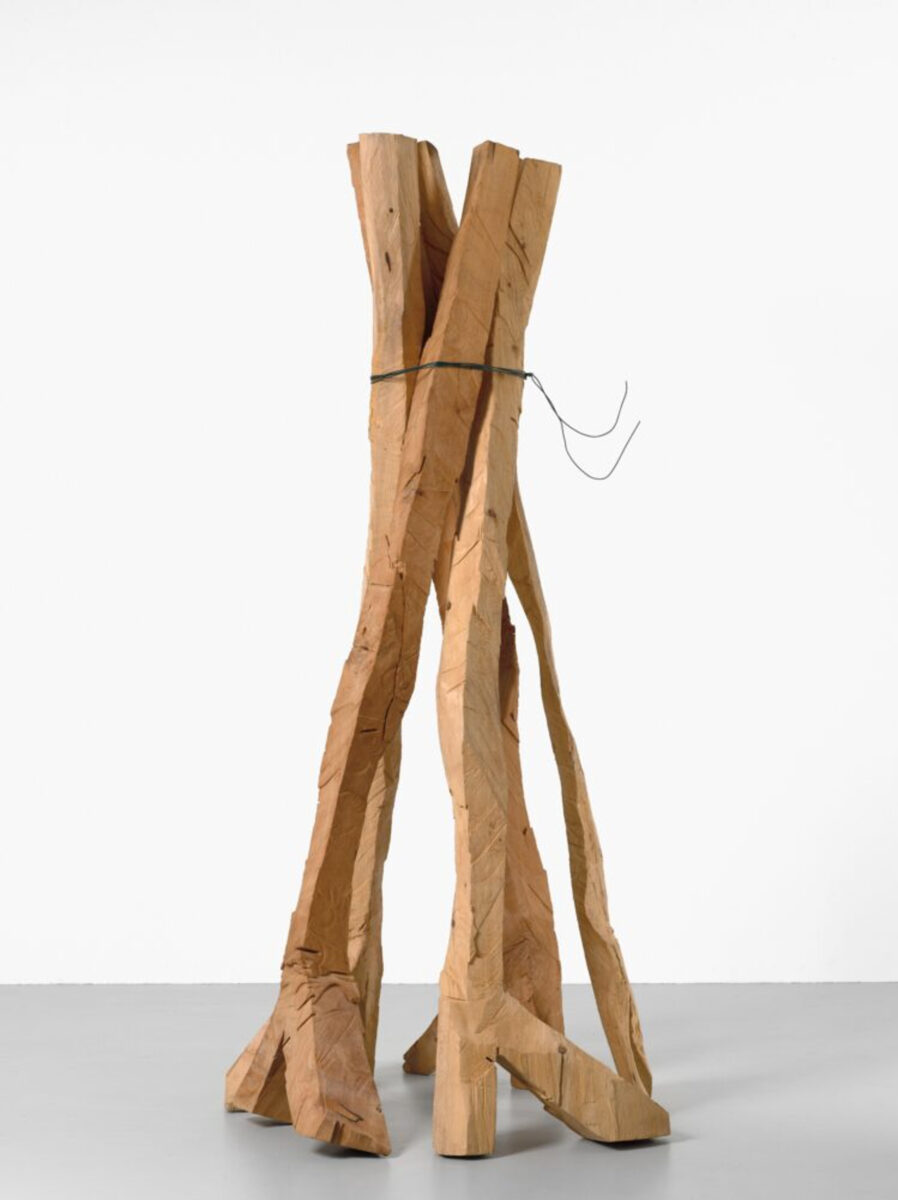
Zero Dom (Zero Dome), 2021, a nine-metre-tall patinated bronze sculpture will be installed on the plinth outside Serpentine South with its corresponding raw maquette featured in the show. Made from 5 carvings in the form of legs, it references Baselitz’s fascination in the foot motif. The drawings included in the exhibition will give visitors insights into the artist’s studio and how his sculptural undertaking relates to his two-dimensional practice. They will reveal how the artist considers different approaches to the central themes in his work.
Accompanying the exhibition is a catalogue which includes newly commissioned texts by contemporary artists Alvaro Barrington, Huma Bhabha, Tracey Emin, Rashid Johnson, Jenny Saville, Erwin Wurm and Rose Wylie reflecting on Baselitz and how they connect to his work. Collectively, these contributions give the reader insights into how Baselitz’s distinctive practice has influenced and intrigued different generations of artists working across a variety of media.
Baselitz’s works are monumental in the traditional definition of the term: even when small in size, they function as monuments. They often loom above their viewers, who must deal with their scale. But what turns these monumental sculptures on their heads is how deeply they relate to the artist’s body. When I look at the work, I am aware of my body in relationship to the sculpture, but I am more aware of his body, of the relationship the maker has with his work.
Alvaro Barrington
Herta Müller and Norman Rosenthal wrote new poems in response to Baselitz’s sculptures while Michael Baxandall and Eric Darragon provide art historical contextualisation to this body of work. A section by Baselitz himself on his sculpture practice will also feature in the catalogue, as well as an interview between the artist and Hans Ulrich Obrist. Designed by A Practice for Everyday Life.
[Baselitz’s] art is unapologetic… In the 1990s when it felt to me that the emotional doors of art were closed, [Baselitz was] there forcefully trying to smash them open…[Baselitz] kept the gateways open for artists like me.
Tracey Emin
Georg Baselitz: Sculptures 2011 – 2015, Serpentine South and in The Royal Parks, 5th October 2023 – 7th January 2024
About the artist
Georg Baselitz (b. in 1938 in Deutschbaselitz, Saxony). With a career spanning over six decades, Georg Baselitz’s expansive body of work charts his contemplations on the complexities of representing the human figure in art. The artist’s oeuvre, which encompasses painting, sculpture, drawings and prints, is rooted in the context of the aftermath of the Second World War in Germany. Born in 1938 as Hans-Georg Kern, he fashioned his name from his birthplace, Deutschbaselitz, a small village in Saxony, eastern Germany. In the 1950s, he briefly undertook training in the officially sanctioned artistic style of Social Realism in Communist East Berlin, before moving to West Berlin, where he encountered abstract art. He ultimately rejected both positions to forge his own distinctive style centring on the human form, which Baselitz is known for inverting, or turning upside down, from 1969 onwards.
Georg Baselitz’s work has at times been met with controversy, first in the 1960s when he emerged with transgressive paintings and again in the 1980s with the advent of his sculptural practice, he has influenced generations of artists by offering a nuanced approach. His work grapples with the explosion of conceptual debates around national identity, aesthetic frameworks and the human condition since the second half of the 20th Century.
Baselitz lives and works near Salzburg, Austria; at lake Ammersee, Germany; and Imperia, Italy. He has exhibited widely, including solo shows at Kunsthistorisches Museum, Vienna (2023); The Morgan Library & Museum, New York (2022) Museo di Palazzo Grimani, Venice (2022); Centre Pompidou, Musée national d’art moderne, Paris (2021); Gallerie dell’Accademia, Venice (2019); Fondation Beyeler, Basel, Switzerland, and Hirshhorn Museum and Sculpture Garden, Washington (2018); Städel Museum, Frankfurt (2016-17, travelling); Haus der Kunst, Munich (2014); Franz Marc Museum, Kochel am See, Germany (2014); Musée d’art moderne de la Ville de Paris (2011 and 1996); Gemäldegalerie Alte Meister der Staatlichen Kunstsammlung Dresden, Germany (2009); Kunsthalle Baden-Baden, Germany (2009); Museo d’Arte Contemporanea Donna Regina, Naples (2008); Royal Academy of Arts, London (2007); Louisiana Museum of Modern Art, Humlebaek, Denmark (2006); and Solomon R. Guggenheim Museum, New York (1995, travelling). Significant group exhibitions include ‘Baselitz, Richter, Polke, Kiefer — The Early Years of the Old Masters’, Staatsgalerie Stuttgart, Germany (2019, travelling); the 56th, 52nd, 39th Venice Biennale (2015, 2007, 1980); ‘Germany Divided, Baselitz and His Generation from the Duerckheim Collection’, British Museum, London (2014); Carnegie International, Pittsburgh (1995, 1988, 1985); ‘Bilderstreit’, Museum Ludwig / Rheinhallen, Cologne (1989); ‘A New Spirit in Painting’, Royal Academy of Arts, London (1981); and Documenta 7 and 5, Kassel, Germany (1982, 1972).


